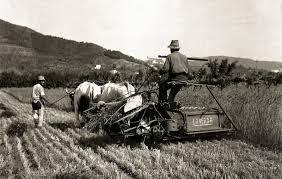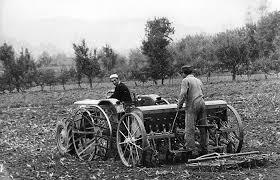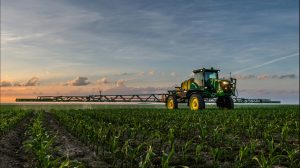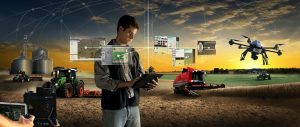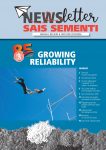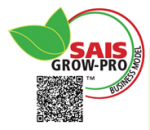The Evolution of Agriculture: From 1.0 to 4.0
Agriculture, the backbone of human civilization and growth, has undergone a deep transformation over centuries. From the simple, manual labor of early farming to the highly technological and data-driven practices of today, the industry has evolved significantly. This evolution is broadly categorized into four distinct eras: Agriculture 1.0, 2.0, 3.0, and 4.0.
Agriculture 1.0: The Era of Manual Labor.
Agriculture 1.0 was characterized by simple tools, manual and animal labor, and a strong reliance on natural elements like the sun and rain. Farmers relied on their knowledge of the land, weather patterns, and traditional farming practices passed down through generations, from father to sons. This era was marked by subsistence farming, where families produced just enough food to sustain themselves.
Agriculture 2.0: The Era of Mechanization, chemical fertilizers and agro-chemicals, the ‘50s.
The advent of the Industrial Revolution brought significant changes in agriculture and this period is also called “Green Revolution” because of the huge increase in yield and productivity in all crops. Agriculture 2.0 saw the introduction of machinery, such as tractors and harvesters, which replaced manual labor and increased productivity. This era also witnessed the development of chemical fertilizers and pesticides, which improved crop yields but had negative environmental impacts. Many of those changes were consequence of the re-adaptation of mechanical and chemical industries, conevrted to civili uses after having been producing for the army in world war II. Also breeding started to boost, both from public universities and public institutes, and privat companies.
Agriculture 3.0: The Precision Agriculture Era, the ‘90s.
Agriculture 3.0, also known as precision agriculture, leveraged technology to optimize farming practices. GPS technology, remote sensing, and Geographic Information Systems (GIS) were integrated into farming operations to collect data on soil conditions, crop health, and weather patterns. This data was then used to create precise maps and apply inputs, such as fertilizers, pesticides and water for irrigation only where and when they were needed, reducing waste and minimizing environmental damage. In this period the awarness of the environmental impact of the large use of fertilizers and chemical became known to the public opinion.
Agriculture 4.0: The Digital Revolution in Farming, today.
Agriculture 4.0 represents the ongoing digital revolution in farming. It is characterized by the convergence of technologies such as the Internet of Things (IoT), artificial intelligence (AI), robotics, and big data analytics. In this era, farms are becoming increasingly automated, with robots performing tasks like planting, de-weeding, and harvesting. IoT sensors monitor various aspects of farm operations, from soil moisture to livestock health. AI algorithms analyze vast amounts of data to optimize decision-making and predict future outcomes. Precise application of resources strongly reduce the waste and the environmental impact. A big contribute is brought also from Breeding, developping varieties needing less inputs to produce a good yield, and more resilient to the environmental stress.
Key Technologies Driving Agriculture 4.0
- Internet of Things (IoT): IoT devices connect farm equipment, sensors, and other devices to collect and transmit data.
- Artificial Intelligence (AI): AI algorithms analyze data to identify patterns, make predictions, and automate tasks.
- Robotics: Robots perform tasks such as planting, weeding, and harvesting, increasing efficiency and reducing labor costs.
- Drones: Drones are used for tasks such as crop monitoring, spraying, and delivering supplies.
- Big Data Analytics: Big data analytics helps farmers make informed decisions based on vast amounts of data.
- Blockchain: Blockchain technology can be used to track the origin and quality of food products.
Benefits of Agriculture 4.0
- Increased productivity: Automation and optimization lead to higher yields.
- Reduced environmental impact: Precision agriculture minimizes the use of inputs, reducing pollution.
- Improved food safety: Technology can help track food from farm to table, ensuring safety and quality.
- Enhanced sustainability: Agriculture 4.0 can help address challenges such as climate change and food security.
Challenges and Future Directions While Agriculture 4.0 offers many benefits, it also presents challenges, such as the high cost of technology, the need for skilled labor, and concerns about data privacy. As the industry continues to evolve, future developments may include:
- Autonomous farming: Fully autonomous farms operated by AI and robotics.
- Vertical farming: Growing crops in stacked layers in urban environments.
- Gene editing: Using CRISPR and other technologies to create genetically modified crops with desirable traits.
In conclusion, the evolution of agriculture from manual labor to highly technological practices has been remarkable. Agriculture 4.0 represents the cutting edge of farming, offering a scenario of a more sustainable, efficient, and productive food system. As technology continues to advance, the future of agriculture looks bright and gives chances to increase productivity and reduce the environmental impact.
Sais follow this trend of new technologies both in vegetable seed production, as well as in breeding with conventionall techniques (not GMO).



